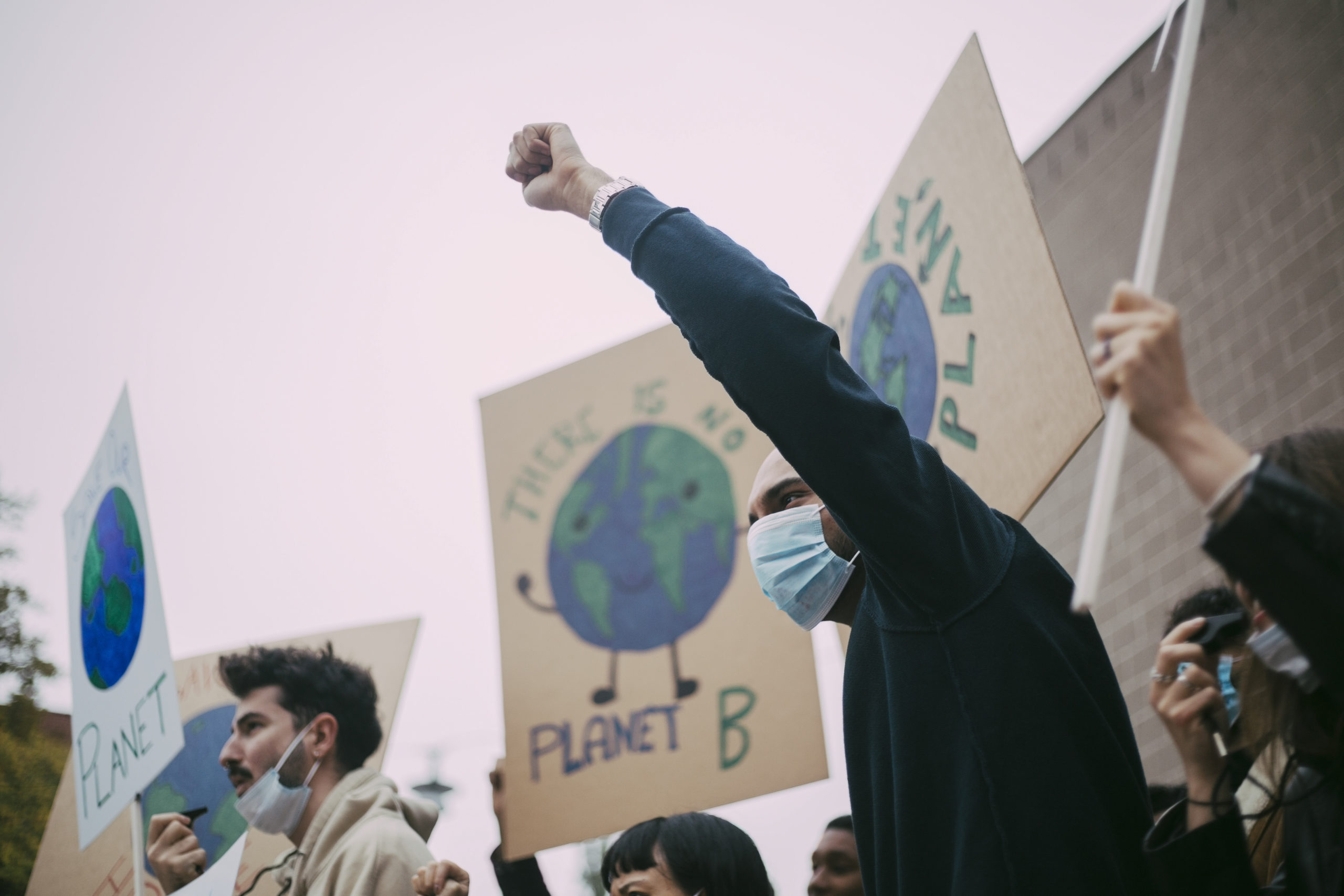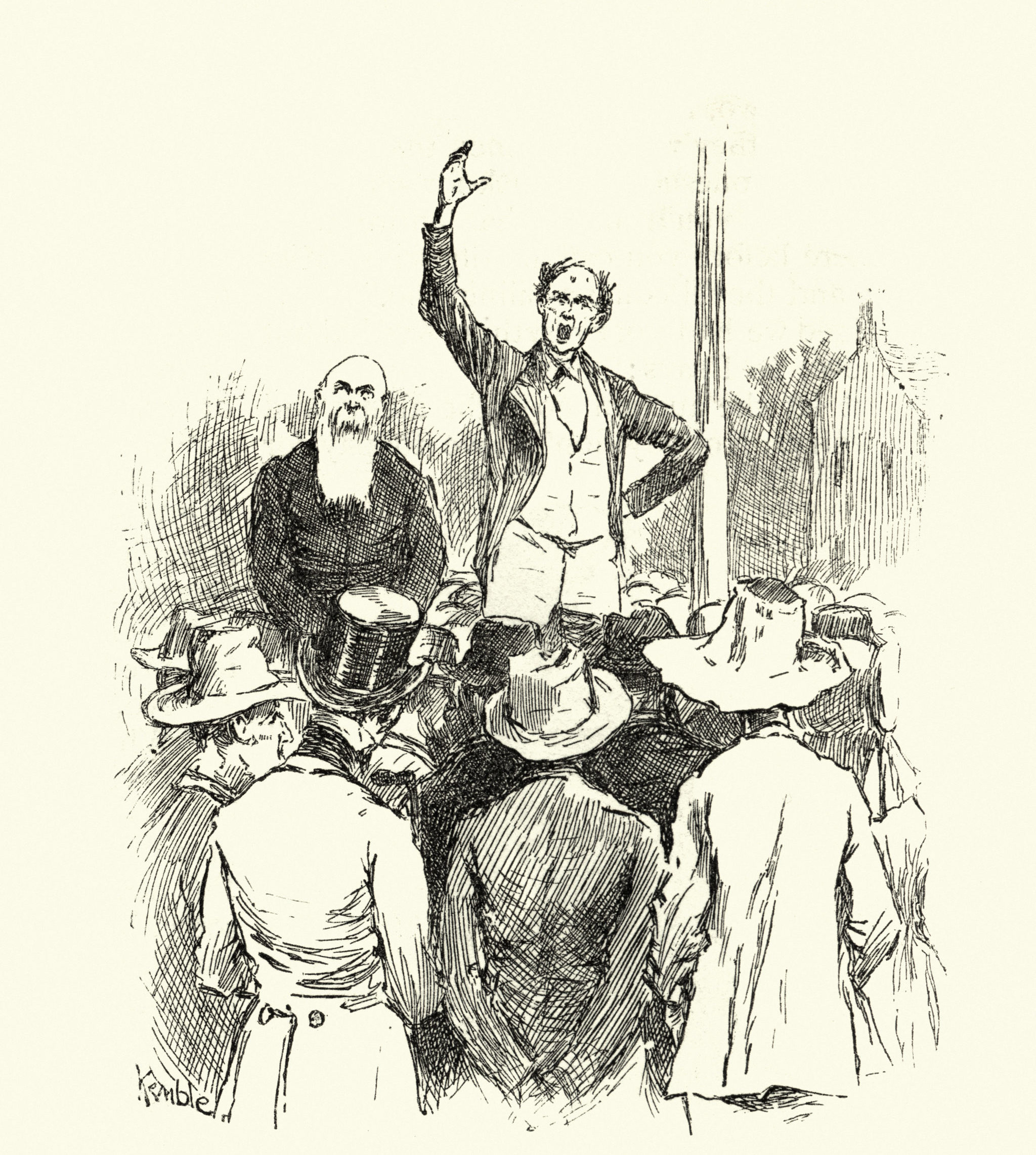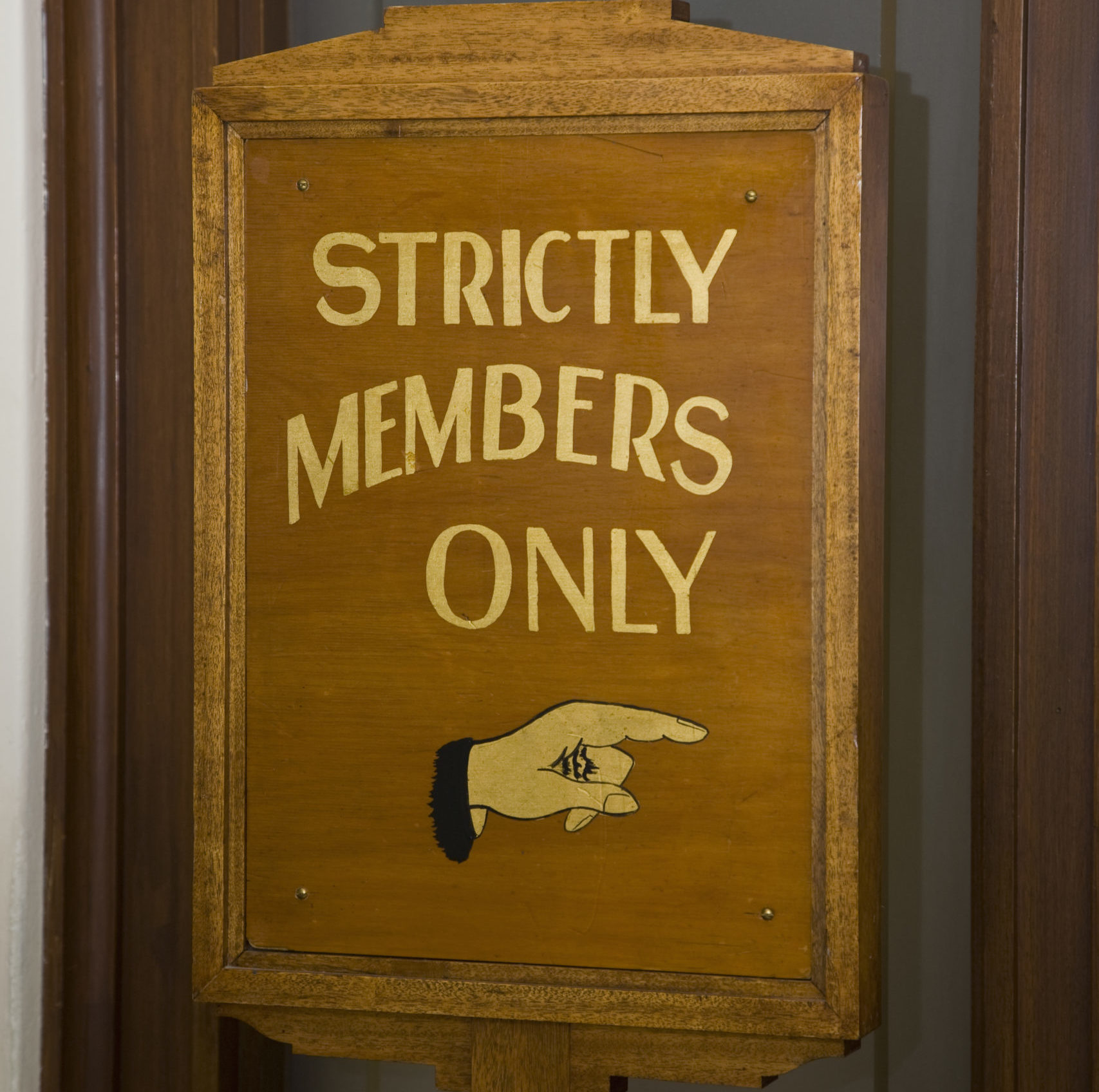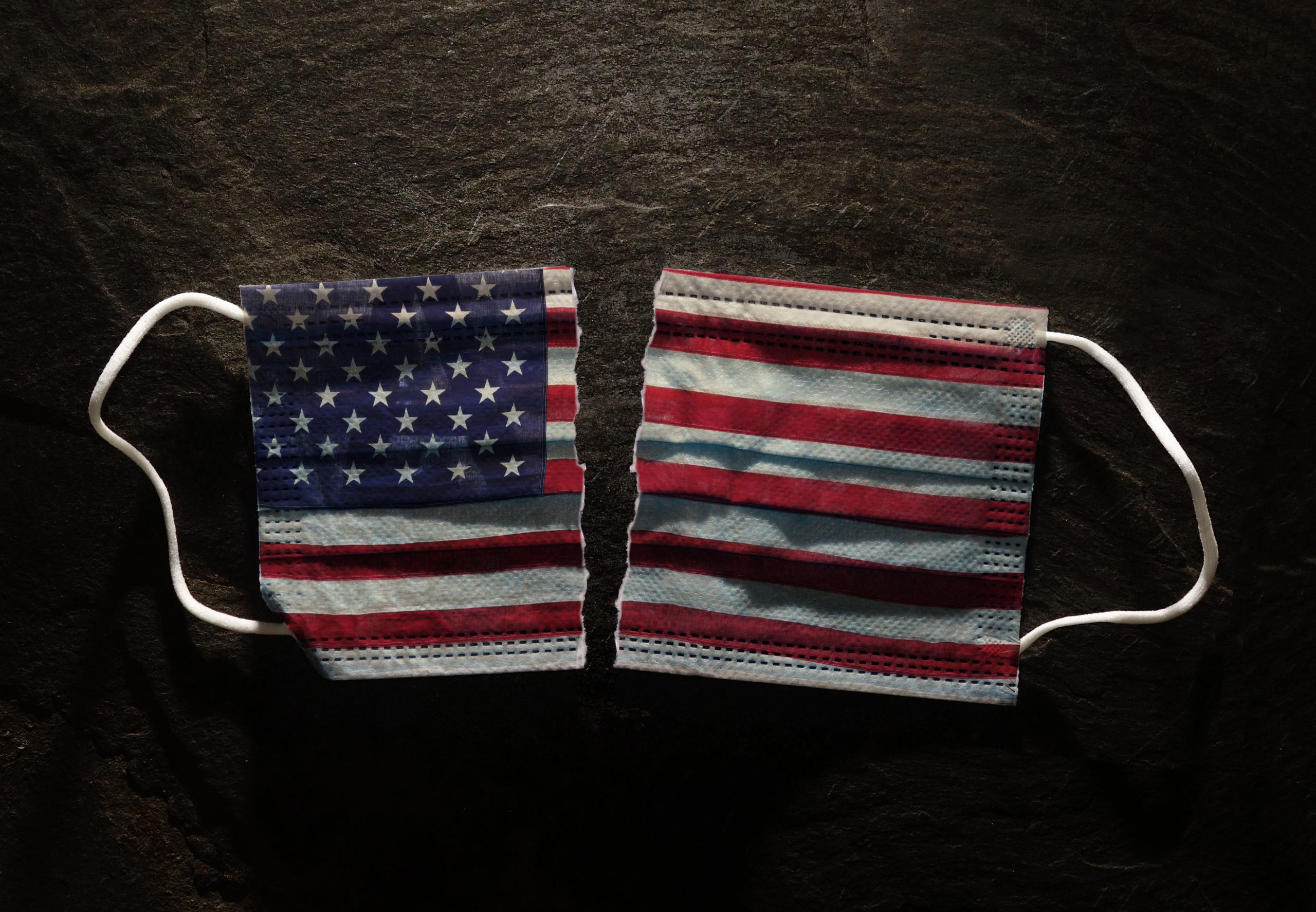Self-proclaimed moral superiority is no qualification for public office.
What COVID Hath Wrought

The hard facts—and hopeful opportunities—of a post-pandemic world.
Glenn Ellmers’s analysis of COVID and Trump represents a classic, and effective, account of the situation from the perspective of declining liberty and adherence to traditional values. But though it is important and necessary to hold onto our highest ideals, I would like to emphasize what is actually taking place on the ground and its likely long-term implication.
Statistics show that COVID accelerated economic, demographic, and geographic trends which were already existent, but rarely acknowledged. These trends include large-scale migration to the south, the west, and the suburbs. COVID also, as Ellmers suggests, sharpened the conflict between many Americans and the ruling “expert” class, who, unlike most Americans, actually flourished under COVID.
I am less sure that Trump was a force for good in all this, given his profound personal failings and mixed messaging during the pandemic. Yet he did stir up dissent against the overweening policies of some governors. In this sense the health crisis intensified an already existing political one. Looking forward, post-COVID reality has seen the emergence of powerful populist politics in both parties, and a marked drop in public esteem for the nation’s once-revered institutions.
Funding the New Elites
In the short run the pandemic strengthened the position of the ruling metropolitan elites centered in Puget Sound, the Bay Area, and New York City. Financial and technology moguls’ net worth has surged during the pandemic, while many businesses in the analog economy suffered devastatingly. Overall, poor and minority communities endured fatalities at twice the average rate of other areas. Minorities and the poor also often lost their jobs, which usually could not be done remotely. Their housing, health needs, and reliance on transit made them all the more vulnerable.
In the middle classes, the Census shows that two thirds of small businesses have suffered from the pandemic, with 200,000 more closings than usual in the first year. As a consequence, the population of property-less, destitute, and barely surviving serfs is expanding rapidly—both here and around the world. In the U.S. alone, the ranks of the lower classes are projected to increase by as much as 50%, to levels not seen in at least a half century.
The other big winners have been the Clerisy: the class that clusters in academia, in the upper bureaucracy, and in such professions such as education, consultancy, law, top-level government, and specialized medicine. One analyst, Michael Lind, estimates that what he calls the “overclass” makes up some 15% of the American workforce—making it far larger than the old First Estate, which was closer to 1% of the French population.
Geographic Shifts
Yet even as the companies headquartered in the big cities flourished, their human capital began to depart for less crowded places. As in the past, dense centers—what historian William McNeil described as the “confluence of the civilized disease pools”—suffer worst from pandemics, as did ancient Rome, the great cities of the Renaissance, the Islamic Caliphate, and China. In COVID, dense urban centers suffered generally the worst fatality rates. This still remained the case even as the disease spread to every corner of the country. One unintended consequence: the big cities themselves are increasingly abandoned to those without the resources to escape them.
Even as the severity of the pandemic has faded, what historian Kyle Harper describes as the “relentless evolution” of the pathogen has continued, albeit in a less lethal but more contagious form. This may explain in part why the return to the office has been slower than some predicted. This has been particularly marked in San Francisco, Chicago and, most importantly, New York, where midtown offices are still half empty. Even San Francisco, with one of the nation’s strongest CBD industries, has suffered rising office vacancies, and has done poorly luring workers back.
Overall, the pandemic served to exacerbate the economic decline of large, dense cities. Today most of the highest rates of unemployment are among large metros, while the weakest job recoveries are evident in places like New York, Los Angeles, and Chicago. The big winners have been primarily in places like Houston, Dallas, Phoenix, and even midwestern cities like Columbus.
This economic shift comes on the heel of long-developing demographic trends. Despite all the talk of moving “back to the city,” suburbs account for about 90% of all U.S. metropolitan growth since 2010. Between 2010 and 2020, the suburbs and exurbs of the major metropolitan areas gained 2.0 million net domestic migrants, while the urban core counties lost 2.7 million. Amidst fear of pestilence, the rise of online work, and rising crime, we have seen a marked decline of urban populations over the past two years. In the last year, the biggest migration losses took place in three key states: New York, New Jersey, and Illinois.
The Censorship is the Point
On the surface, these trends would seem to favor a more conservative politics and more power to red states. In 1960, New York accounted for 45 electoral votes while Texas had 24 and Florida 10. In 2024, New York will be down to 28 while Texas has gone to 40, Florida to 30. California, which has been the one great blue-tilted mega-state, still leads with 54 votes, but has actually lost one due to below-average population growth, even a decline in 2021, making a demographic resurgence more dubious. Yet these changes may not be enough to moderate the authoritarian tendencies of blue politicians, deepened but not created by the pandemic. As one observer at Tablet noted, the authorities have assumed that they alone had “the truth” and other opinions are to be excluded until, as occurred with the lab leak, the possibilities were too compelling to ignore.
Throughout the pandemic, progressive control of most public institutions, as well as the major technology firms, redounded to their great advantage. Those who differed on key issues, such as the effectiveness of broad lockdown policies or the origins of the virus, suffered virtual exclusion by the main internet platforms. Even distinguished epidemiologists who disagreed with COVID orthodoxy found themselves in the digital gulag.
Not satisfied with this as-yet still limited censorship, some progressive academics now claim that China’s information control policy on the pandemic was “right” compared to our still unruly system. They suggest that Chinese-style controls on media should replace our historically more contentious and permissive approach. The Clerisy remains convinced of the efficacy and urgency of tough lockdowns. They are willing to silence dissent as a way of pursuing their agenda, which they deem not only right but morally urgent and indisputable. More fundamentally, the idea current among our governing elites is that authority rests with the authorities, not the populace.
It may well be that lockdowns, at least as implemented and at such durations, have been proven largely ineffective, as the number of fatalities did not vary much between hard lockdown states and less controlled states. But the implications of this are too discordant for a media that favors control over more nuanced approaches, such as those adopted in Sweden, which focused on vulnerable populations. Our own Clerisy is all-in on lockdowns. Considering or even acknowledging the existence of other methods would for them be admitting total and unredeemable failure. So much for adherence to science, and the scientific method.
Masks Off
Like Ellmers, I fear that the COVID years represent not an aberration from democratic political norms, but the first clear expression of a new autocratic system which only needed the opportunity to make itself known. Crises like the pandemic illustrate sociologist Robert Michels’s “iron law of oligarchy,” articulated in the early 20th century: the more complex the issue, the greater the need for elite-driven solutions. A progression of crises—real, exaggerated or even imagined—sets the table for authoritarian approaches. As Italian philosopher Giorgio Agamben suggests, “A society that lives in a permanent state of emergency cannot be free.”
Sadly, the pandemic may not be the ultimate expression of this new autocracy. In their oddly theocratic way, some environmentalists view the pandemic, like climate change, as a kind of “comeuppance” for the evil impact of humans on earth. Nature is “sending us a message,” suggests the U.N.’s environment chief, Inger Andersen, in reference to the virus. Unsurprisingly, zealots like the Guardian’s George Monbiot have embraced this account of things.
For some greens, the policies used to battle the virus can serve as a “test run” for what they believe will be necessary to save humanity. Like the more extreme lockdown advocates, they seek to justify unprecedented controls over the daily lives of the masses. Much of this is couched in dogma based on consistent exaggeration and predictions of impending environmental doom, including unrealized claims made in the 1970s that natural resources, including energy and food, would run out, leading to mass starvation.
Indeed, whereas COVID restrictions are still seen as temporary, the climate “solutions” proposed by true believers would not be. Some progressive pundits openly favor replacing democracy with a global “technocracy” that would preempt popular control and allow experts to implement policies of their own design. This would entail the marriage of large capital with what former California Jerry Brown approvingly calls “the coercive power of the state.” In this new formulation, political approval from the masses is needless: policies are simply imposed.
As with COVID, climate totalitarianism would require total “curation” of information. Already, climate policy skeptics—even when highly credentialed—are consigned to the digital gulag. Google has proposed to censor comments about climate that do not adhere to the “consensus” of scientists, which, of course, is circular logic. Shutting down the serious debates over the nature of the crisis and the best, most equitable ways to address it, our elites have announced their intention simply to declare what consensus is, rather than confronting it through free inquiry.
The New World
Yet if the pandemic has taught us anything, it is that people need to challenge the priorities of their “betters.” After all, our political leaders, notes historian Harper, should have seen this not as “an act of God” but as “a perfectly inevitable disaster,” one likely to remain part of our future, particularly due to high-density living and easy global travel.
These realities carry both threats and some possible opportunities. Just as the plague transformed Europe and helped usher in the modern capitalist era, in part by raising the cost of labor, it also eventually led to critical improvements in public health, particularly in terms of sanitation and water systems. London’s emergence as the first megacity since Rome would not have happened without it. Cleaner buildings, better ventilation, and better control of pests should be a part of the new post-COVID environment.
But it will not be easy to limit governmental authority during an emergency. Agamben writes of “sanitation terror and a religion of health” that leads some “to pitilessly abandon the paradigm of bourgeois democracy.” Like the quarantined residents in Camus’s The Plague, we lived in a “pit of despond,” a life more like that of prisoners than citizens. Some of Agamben’s admirers found dissent from authority unacceptable amidst COVID, viewing it as clearly an appeal to the political Right.
Yet if Agamben, like Ellmers, worries about pestilence boosting government control, history suggests the experience can also lead to pushback. The Arab historian Ibn Khaldun, who experienced the Black Death himself in Tunisia, noted that pestilence tended to weaken central “authority” and even put an end to dynasties. Under the pressure of the plague, he wrote, “the entire inhabited world changed.”
We already see tentative change in this direction. There’s already a mass exodus, over two million strong, from public schools, which were widely believed to have handled the crisis poorly—particularly for poor and working-class students. Colleges too have experienced a million-student decline in enrollment amidst widespread evidence of accelerated decline in performance during COVID.
Authority may have flexed their powers more during the pandemic, but public opinion toward higher education, federal government, Congress, the courts, large corporations, and Wall Street are all headed to historically low levels. Protests over lockdowns, sometimes embracing questionable anti-vax ideologies, spread across world, with particular vehemence in, of all places, Canada, but also across the United States. Science too has taken a hit, particularly among Republicans but also across the political spectrum, notes Pew.
Even the CDC, which achieved almost mythical authority early in the pandemic, has lost the trust of most Americans. It now is undergoing a large-scale reappraisal of its public interface. Typically deaf to the public, the Biden Administration still presses for ever-greater central control, even proposing that pandemic response should be handed over to the World Health Organization, now highly compromised largely due to its close China connections. Indeed, as China now reels from sustained and absolute lockdowns, their approach seems somewhat less useful, widely seen as more an exercise in political control than effective health policy.
The post-COVID world does not have to be a diminished one. There is a basis for change in a society where more people work remotely and live as they prefer, violating urban orthodoxy that continues to push, against all health considerations , for ever-greater densities and greater use of public transit. Rather than letting the Clerisy force us closer together, we could nurture instead a decentralized economic structure that would be naturally protective of families, communities, health, and ultimately democracy.
Abstract political philosophy can be enlightening, but it needs to be cashed out in terms of real actions and consequences if it is to rally the average voter. The case should be made that the new autocracy’s gambits are making things materially worse, as evidenced by such failures as high energy prices, the export of manufacturing, school closures, and the devastating effects of masking the very young.
“The habit of despair is worse than despair itself,” Camus noted. To move past this, we need to challenge the inconsistencies of the elites not primarily for ideological reasons but in terms of practical impacts on everyday life. Those who favor productive industry, family, and the notion of upward mobility need to come up with policies that address our most profound concerns, like the pandemic or climate, in ways that sustain both democracy and the hope for upward mobility. Ideology unmoored from the reality of people’s daily experience is not enough.
The American Mind presents a range of perspectives. Views are writers’ own and do not necessarily represent those of The Claremont Institute.
The American Mind is a publication of the Claremont Institute, a non-profit 501(c)(3) organization, dedicated to restoring the principles of the American Founding to their rightful, preeminent authority in our national life. Interested in supporting our work? Gifts to the Claremont Institute are tax-deductible.
You don’t need an epidemiologist to know which way the wind blows.
Things boil down to a question of "Who rules"?
Shame at the experience of subjugation can inspire Americans to reclaim their sovereignty.
An analysis of the current American political crisis.





